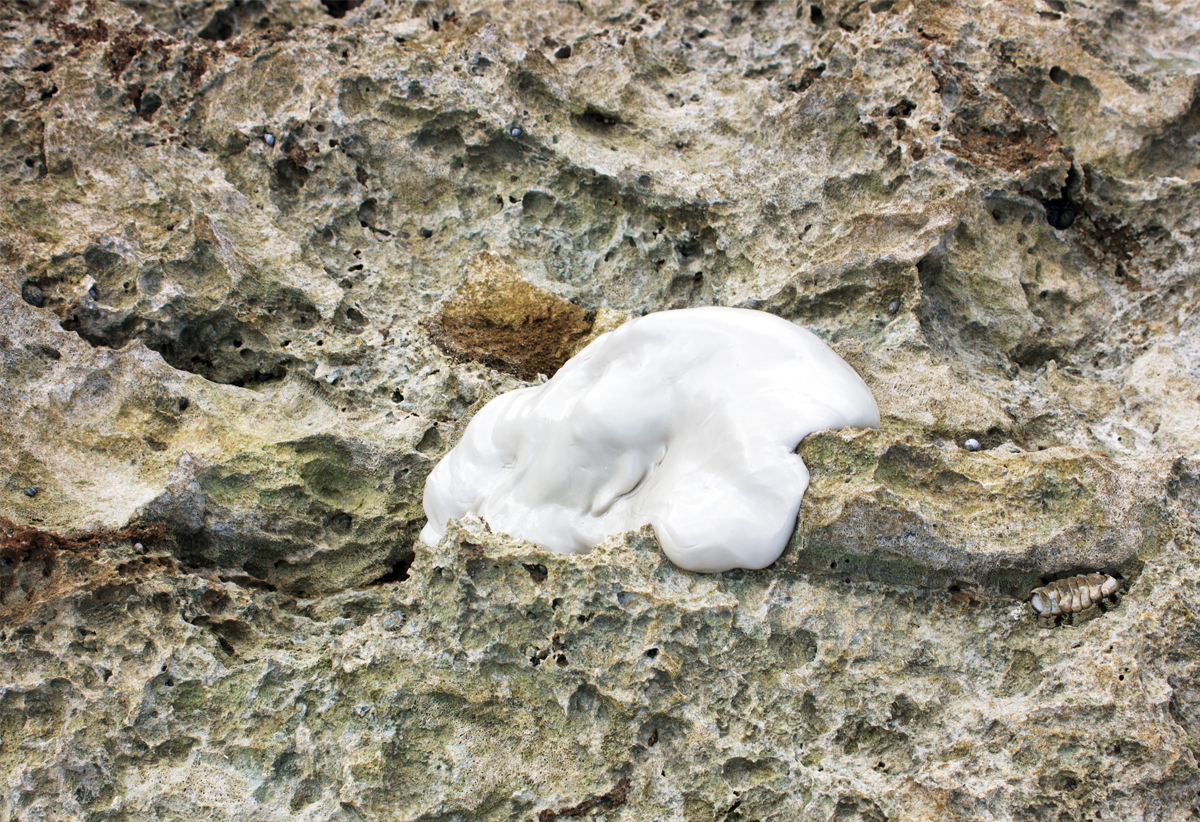

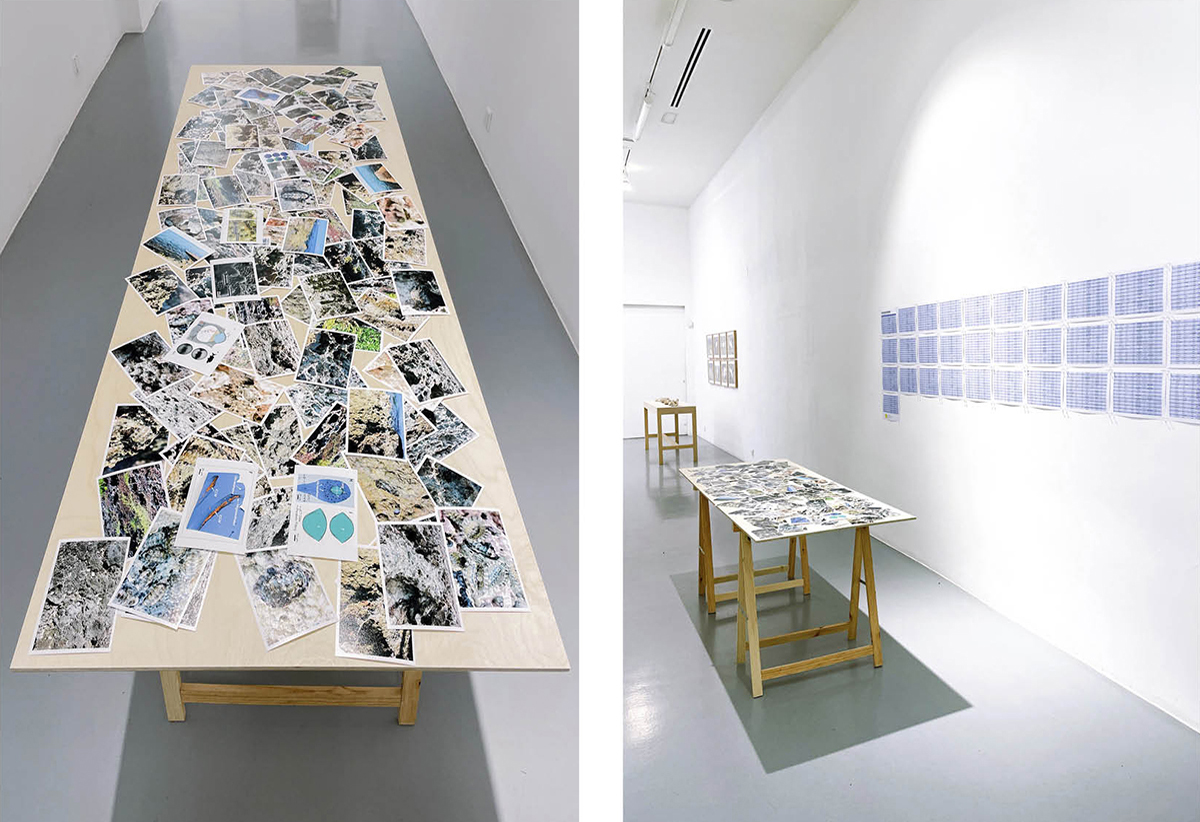



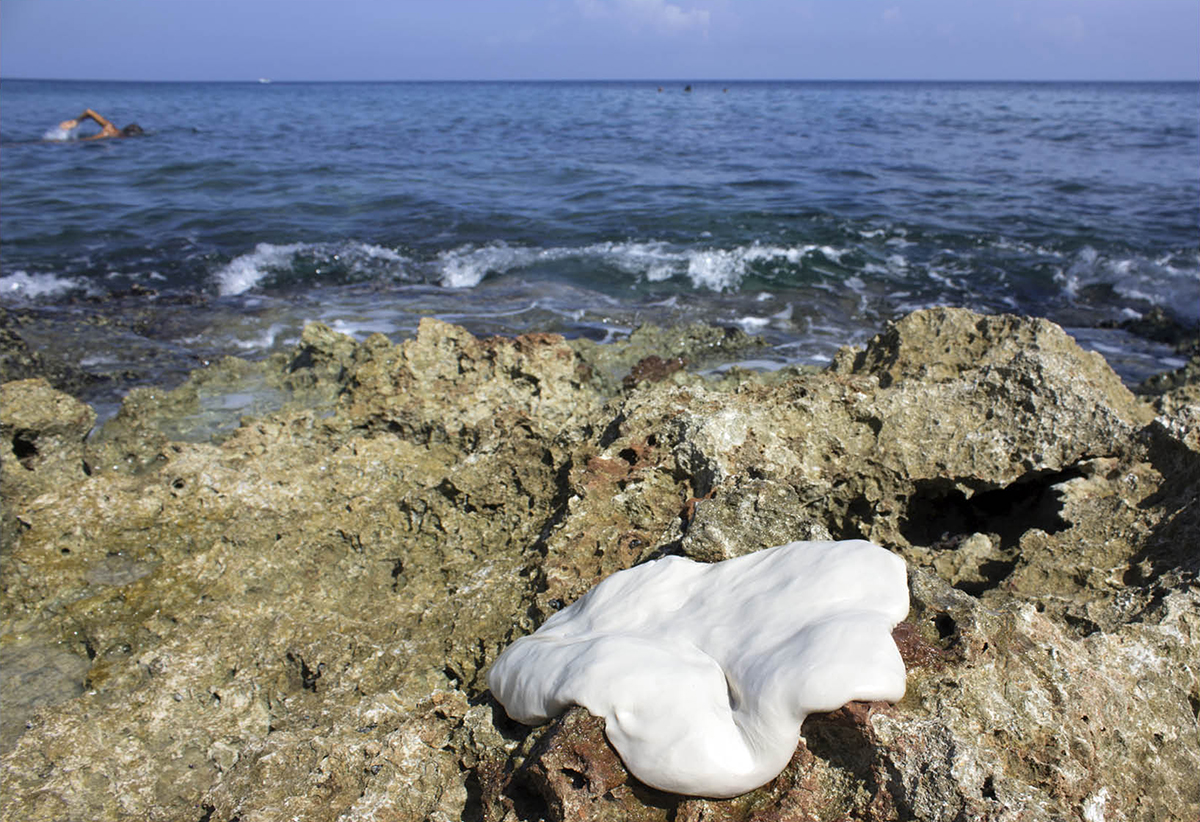
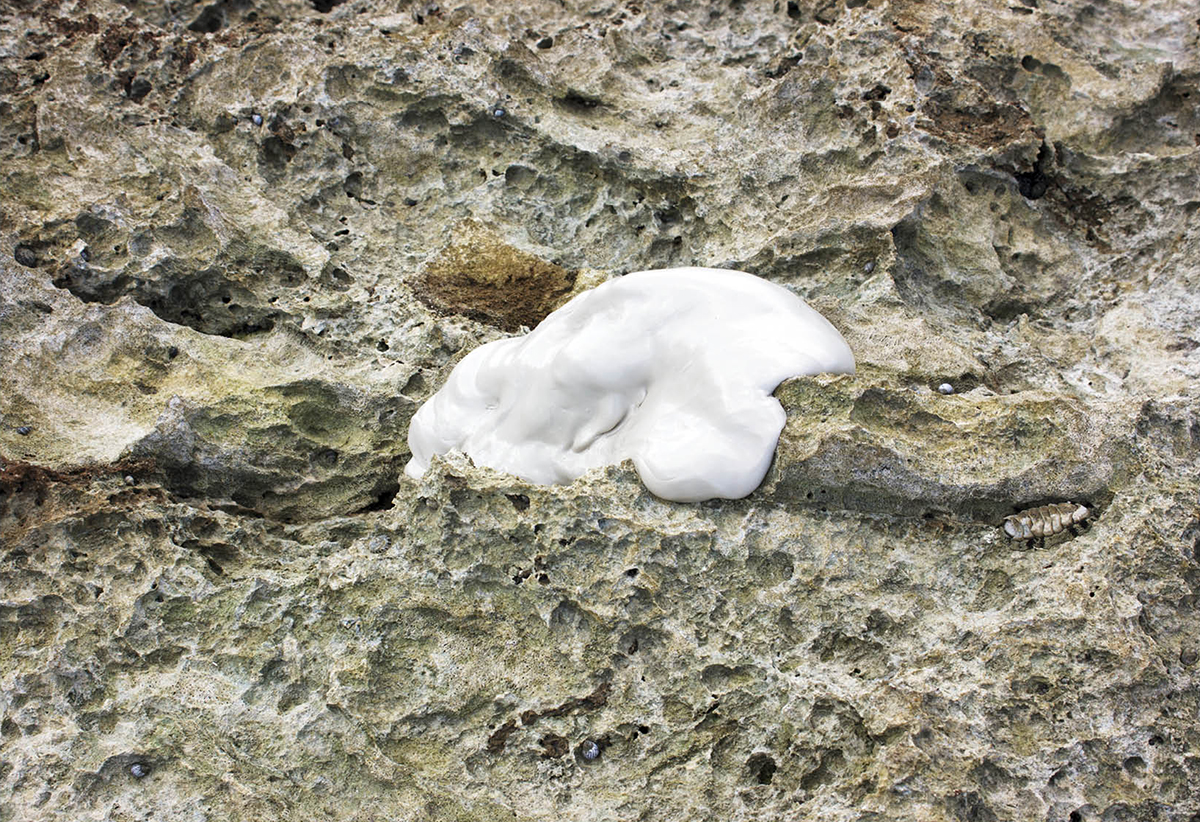
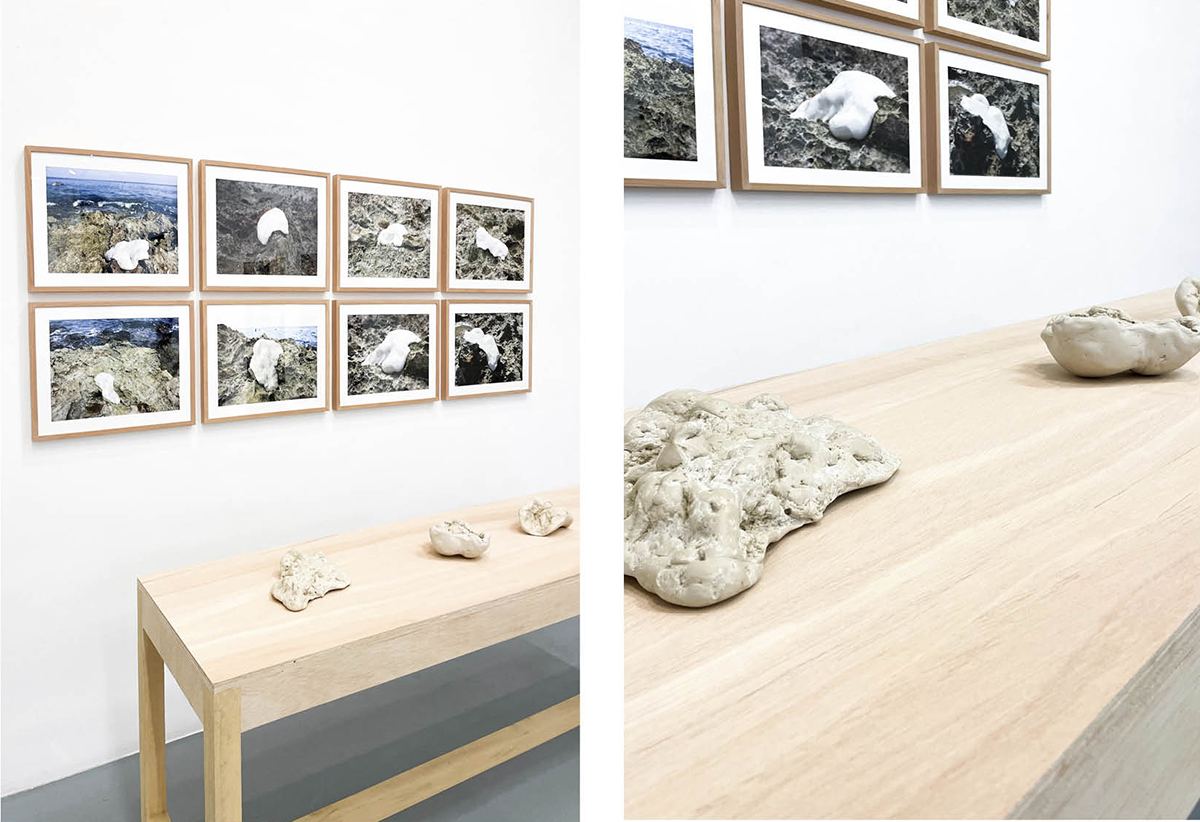


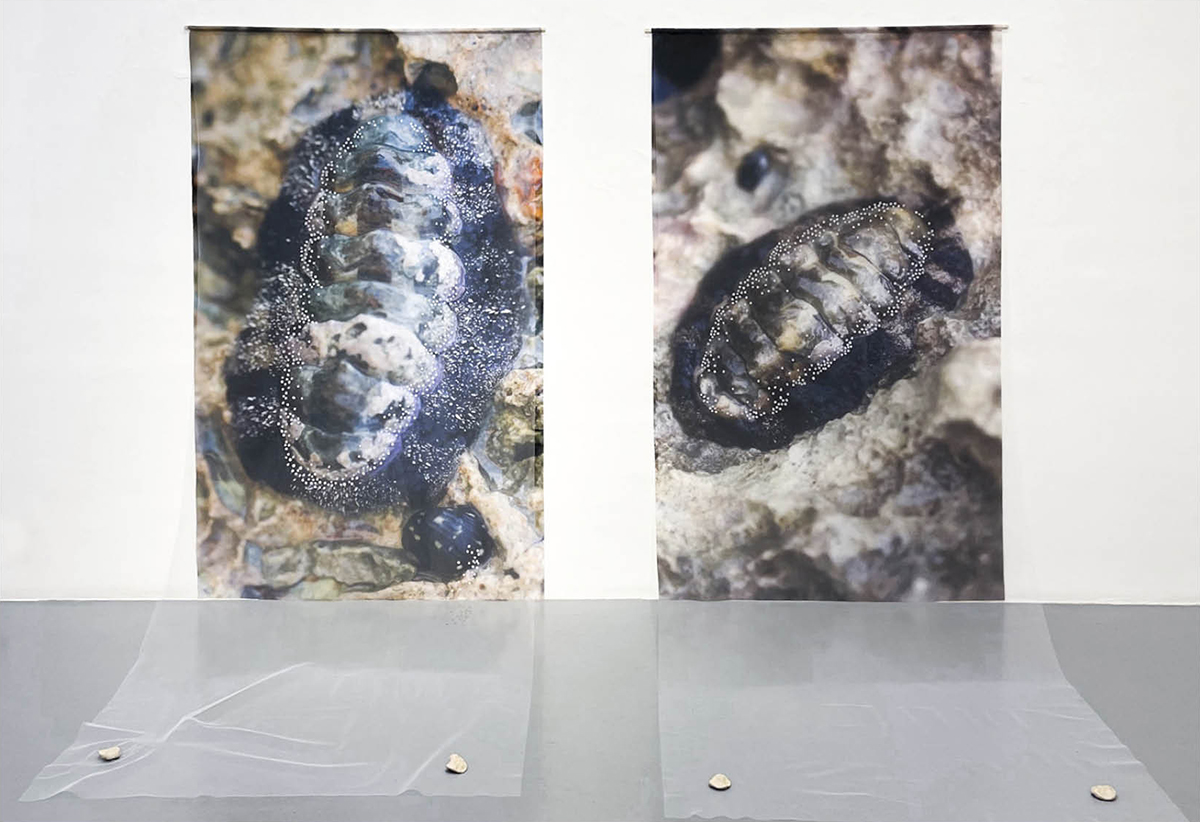



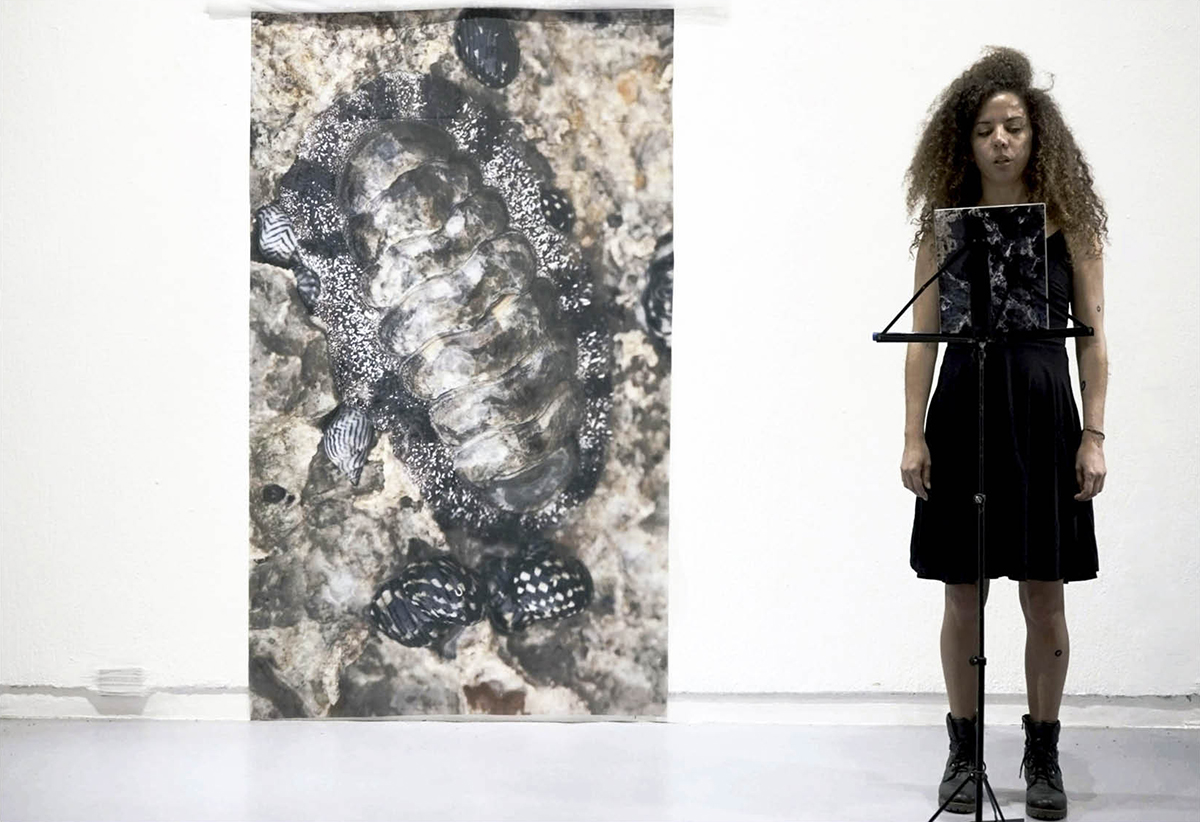
_Celia Irina_Bone eyes_11/11/22_91/09/23_Dossier
The fuzzy chiton, or Acanthopleura granulata, is the only mollusc with a bio-mineral shell that has a visual system. Unlike most animals, whose optical lenses are protein based, the eyes of the chiton are composed of the same material as the shell itself: aragonite, the crystalline form of calcium carbonate found in the shells of most molluscs, as well as in stalactites. The chiton has thousands of eyes spread over and integrated into the shell, allowing it to have spatial vision. In the act of self-protection, the eyes on the upper part of the armour tend to break, yet chitons produce new eyes on the sides of their bodies to substitute them. Chitons are the only molluscs who have and are able to create thousands of bone-based eyes over the course of their lifespans.
During the quarantine and accompanying militarisation of the city of Havana, I carefully observed sea roaches for the first time. Although it was prohibited to go near the coastline -a state restriction justified by efforts to control Covid- I began to regularly set up in the intertidal area of the coast, near where chitons could be found. During my times of illicit contemplation, I closely examined the Acanthopleura granulata surrounding me. I was able to do various photographic sessions, and began to look for information on their behaviour. While my friends, including artists, filmmakers, poets, musicians, journalists or activists, were under surveillance, in prison or restricted from leaving their homes, we began to make it into the national news. It became common to get to a friend’s house and find a patrol unit outside—or a Russian Lada from the military police, who would always be undercover. Vision, being a sense that humans are obsessed with, along with the information gathered through it, became a kind of luxury in the face of the restricted movement imposed by the State. It was then when I began to envy the chiton, with its ability to inform itself and protect itself at once, creating an infinite number of eyes with its exoskeleton.
Would it be possible to think about possible futures, in the face of Caribbean totalitarianism, by recurring to intertidal, saltpetre instruments? As the majority of terrestrial strategies against state repression have been exhausted, the capacity of sea roaches to create eyes that are interrelated while also being spread out across the entire body, has for me become a possible strategy, grounded in oceanic, science fiction and multispecies concepts. In the exhibition “Ojos de hueso” [Eyes of Bone], I propose a speculation on the possibilities of an oceanic mutilation on the bodies of Caribbean humans, so as to imagine possible futures in the face of State repression.
Speculation: a dissident mollusc.
Cuba was declared a Republic in 1902 influenced by the projects and experiments of European modernity, which for their part involved forms of terror like slavery and concentration camps. This terror was justified by the scientistic discourse upholding the superiority of some humans over others, and the possibility of perfecting the best of them, since science would afford the opportunity for nature in its totality to be recognised and transformed until reaching perfection.
The new man is a hallucinatory example, meant to illustrate the effects of placing not only humans but a superhuman at the centre of the thought and practice, whether intellectual or administrative, of a national project. While the reference to the new man was abandoned early on by the rhetoric of the Cuban State, its segregating effects remain, and the political and economic elite is still comprised of the upper echelons of the Communist Party, which dissident movements have run up against with particular intensity over the last two years. What would happen to the Caribbean human—the new man—if we were to think by means of seawater, producing practices with marine forms at their centre?
After the demonstrations calling for civil rights in 2020 and 2021, with a particular focus on freedom of expression, the militarisation of the island grew rather notably. We required a transformation of ourselves as Caribbean humans, who are being repressed by modern experiments in correction. Slowly, but smoothly, we made the effort to create eyes of bone, a necessary mutation against ongoing terror and the exhaustion of terrestrial strategies.
This form came to appear because of the effects of a totalitarian system, environmental conditions and power. These eyes of bone, once established as intertidal instruments, emerging in our bodies as well, are concerning for the managerial class of the Cuban Communist Party. The dissident mollusc irremediably undermines Caribbean totalitarianism, as it is overly invisible and almost impossible to anticipate. Now we are walking through the saltpetre city, more intertidal than ever, protected and well-informed.
Our understanding of vision and protection has changed since this symbiotic process with chitons began. Now we have an amphibian’s perspective on our terrestrial, totalitarian life. With our multifunctional eyes of bone, which are useful in the air and in seawater, we have begun to think through seawater itself.
My description of this dissident-mollusc mutation cannot move any further forward in the present, as we need time to adjust the physiological details involved in this symbiotic process. All I can say is that some of us have begun to expel those eyes of bone that have been broken in use, when confrontations with the police led to physical violence, so its quite probable that the remains are also infesting other terrestrial settlers on the island. How is it that having chiton eyes leads to a conceptual shift, whereby we can ask ourselves about our own thought and confrontation habits with regards to violence, as brought on by modern experiments?
Text by Celia Irina.
Collaborators: Elvi Serrat Llopart (exhibition design), Flavio Tonnetti (stage design), Rodrigo Toro (sound editing), Edén Bernal (video editing), Laura Barrón (photography editing).
With the support
![]()
